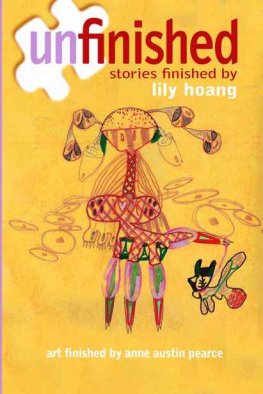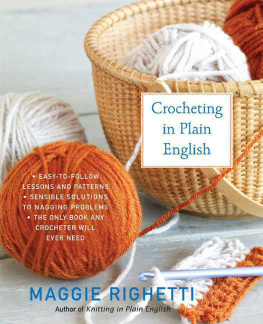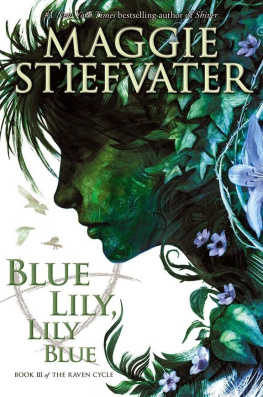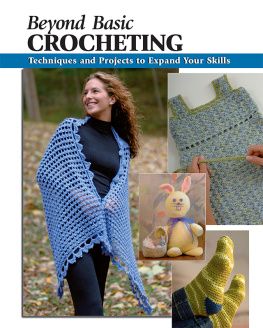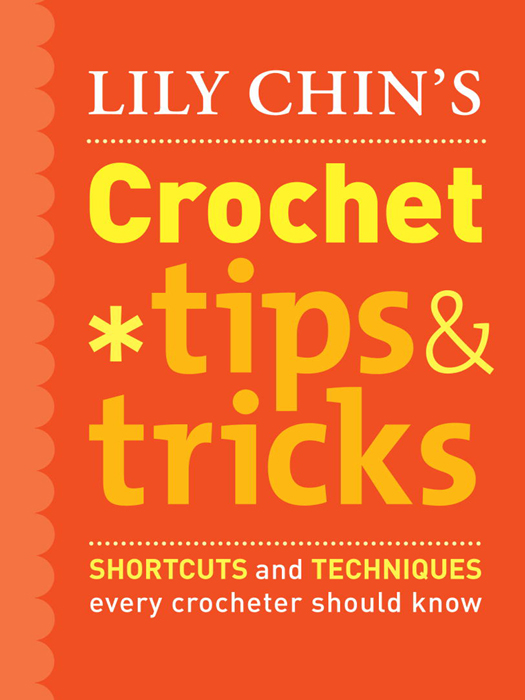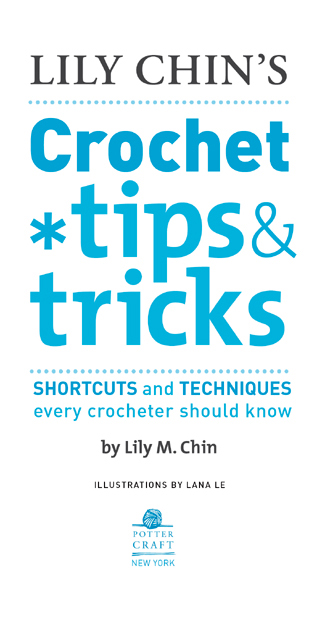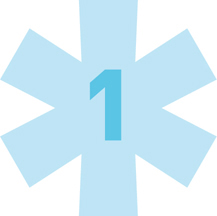Copyright 2009 by Lily Chin
All rights reserved.
Published in the United States by Potter Craft, an imprint of the Crown Publishing Group, a division of Random House, Inc., New York.
www.crownpublishing.com
wwww.pottercraft.com
POTTER CRAFT and colophon is a registered trademark of Random House, Inc.
Library of Congress Cataloging-in-Publication Data
Lily Chins Crochet Tips & Tricks:
Shortcuts and Techniques Every Crocheter
Should Know / by Lily M. Chin.
p. cm. Includes bibliographical references and index.
eISBN: 978-0-307-58695-7
1. Crocheting. I. Title. II. Title: Crochet tips & tricks.
TT820.C484925 2009
746.434dc22
2009021444
THE FOLLOWING ILLUSTRATIONS BY FRANCES SOOHOO: Types of crochet hooks, flat tape or ribbon, fuzzy or hairy, boucl, Yarn thickness, Dernier system ()
ALL OTHER ILLUSTRATIONS BY LANA LE
v3.1

This book is dedicated to the memories of my recently deceased mother and sister. They both nurtured my love of craft from an early age and both left me way too soon.
Contents
Introduction
Having twice won the title of the worlds fastest crocheter, I realized that the tips and tricks Ive developed over the years really do make crocheting go both faster and easier. I do a lot of teaching, my knitting class is hands-down the most popular, and I wanted to do the same for crochet. Ive been offering the crochet class for almost a decade and it always sells out.
I envision this book as that very class brought to the printed pageand my chance to share my techniques with those who have voiced frustration at not being able to attend a class.

There are tons of standard technique books on the market right now. What you hold in your hands is not one of them. Its a volume packed with all the little a-ha moments Ive had when faced with crochet problems and bugaboos. You may already be familiar with some of these solutions; others will be real eye-openers. Why didnt I think of that? is what I hear whenever I present these little tricks to my studentseven those who have been crocheting for years. I may not be the first to employ or invent these techniques, but many of them have become more widespread, Im sure, as a result of the classes that I have held almost every other month since 1997. Word gets around. I like to think that my unventionsthats the late knitting guru Elizabeth Zimmermans term for coming up with something on your own, but knowing you cant possibly be the first to think of ithave both enlightened experienced crocheters and helped beginners start off on the right foot.

Much as I love crocheting, there are certain aspects of the process of which Im not overly fond. (Can we say weave in the ends?) On these pages youll find the simple ways Ive devised to make the annoying parts easier; hopefully they will make your crocheting life a lot more enjoyable as well. The techniques are organized chronologically and are presented in the order of the crocheting process. They can be applied to any project, so you can make use of them in your current work in progress. You may not break my speed records, but I guarantee your crocheting will go faster and be much more fun. Enjoy!
In This Chapter
Hooks and Yarn
The tools and materials you work with can make all the difference between an enjoyable crochet experience and an exercise in frustration. Choose good tools and get yarn thats right for your project and enjoyable to work with. Take advantage of all thats available, and try out different hooks and yarns to see which work best for you.
This basic crochet tool comes in many shapes and sizes. There are lots of optionscrochet hooks can be shaped differently and are made of many different materials.
Hook Types
What do you want to look for in a hook? A hook is made up of a head, a throat, a shaft, a thumb rest (or not), and a handle. There are two distinct shapes to the head of a hook: round and flat (also referred to as in-line). Boye is one brand name for the former and Susan Bates is a brand name for the latter. On either type, the width of the shaft determines the size of the stitches you will create.
Some crocheters say they like hooks with a round head because the pointy top allows them to get into the stitches more easily. Others prefer hooks with a flat hook because it makes pulling the yarn through the stitches smoother. I encourage you to try both styles, in different materials, to find what works best for you. I favor the flat heads, but thats due to my own movements in crocheting.
Most hooks have a thumb rest or indent on the shaft that keeps the hook from rotating as you stitch. Some find this thumb rest useful and are annoyed by the lack of it; others do not. Again, try both types to decide whether this feature is important to you. I like it myself, but the choice of a hook is very personal.
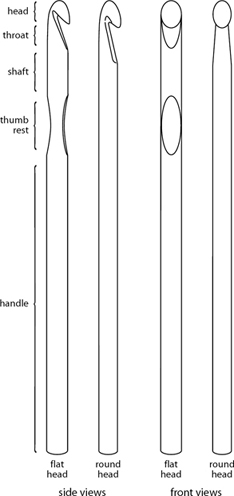
Types of crochet hooks
Hook Materials
In the old days hooks were made from metal, bone, or wood (and occasionally more precious materials, such as ivory or tortoise shell). Todays hooks are made from many materialseverything from plastic, aluminum, and brass to exotic hardwoods, ecologically friendly bamboo, and glass. Some hooks are coated with nickel plating to speed stitching and some have an internal light source so they glow in the dark.
Hook Sizes
Hooks come in a large range of sizes. In the United States they are lettered and numbered. The higher the letter, the larger the hook; the number refers to the equivalent knitting needle size. In most of the rest of the world, however, hooks are measured in millimeters. To confuse things even further, some hooks used in the UK go by an older numbering system in which the larger the number, the smaller the hook. Here are the sizes and their equivalents.
CROCHET HOOK SIZE
U.S. Size:B-1 (2.25mm)
UK/Canadian Size:
U.S. Size:C-2 (2.75mm)
UK/Canadian Size:
U.S. Size:D-3


